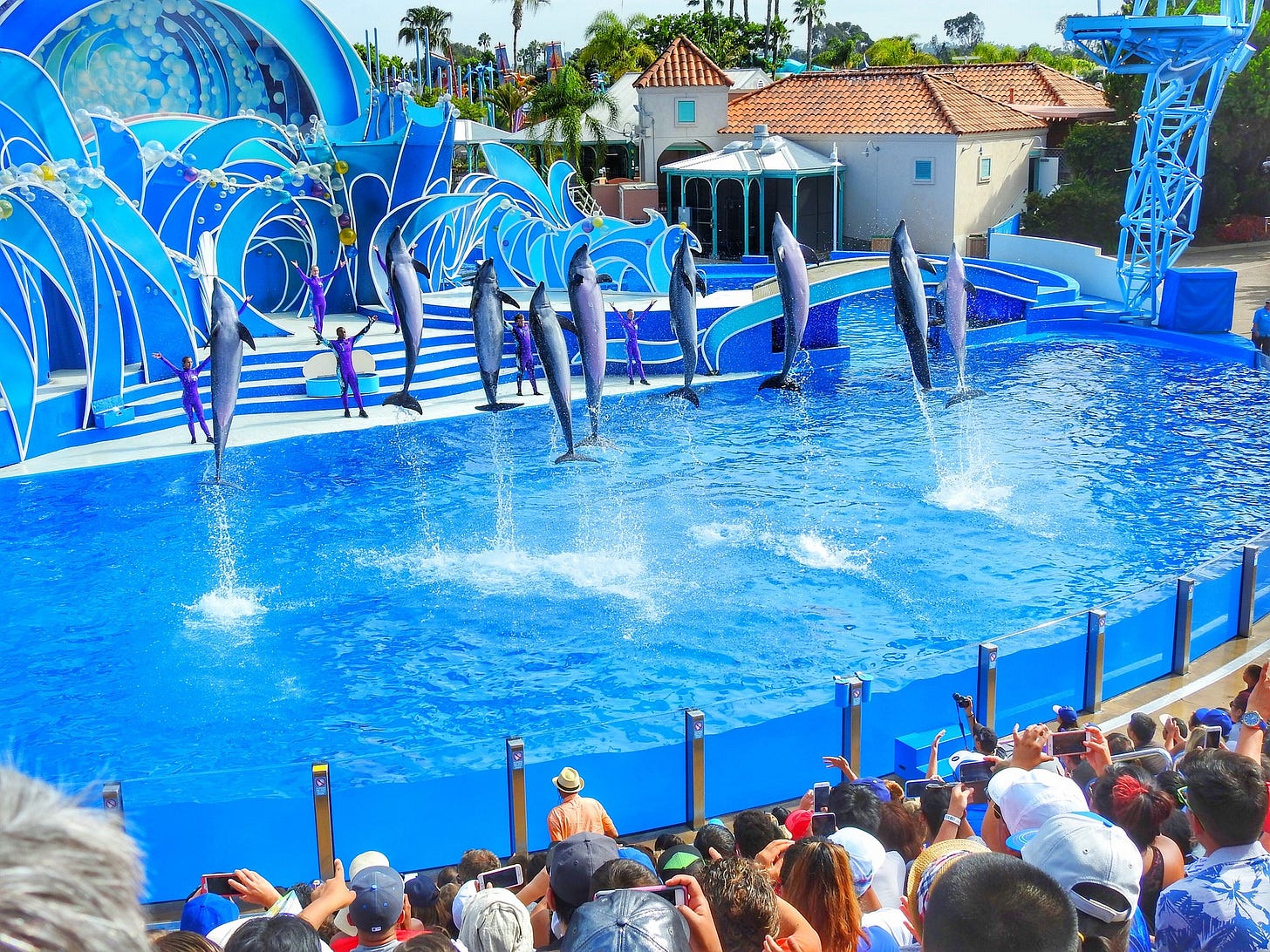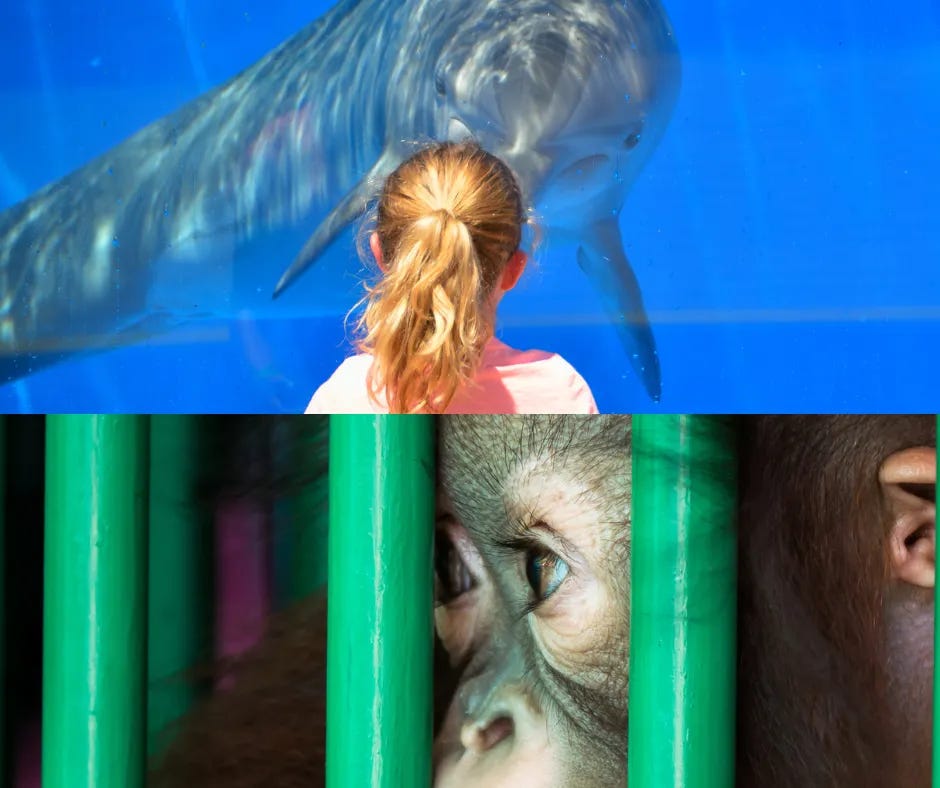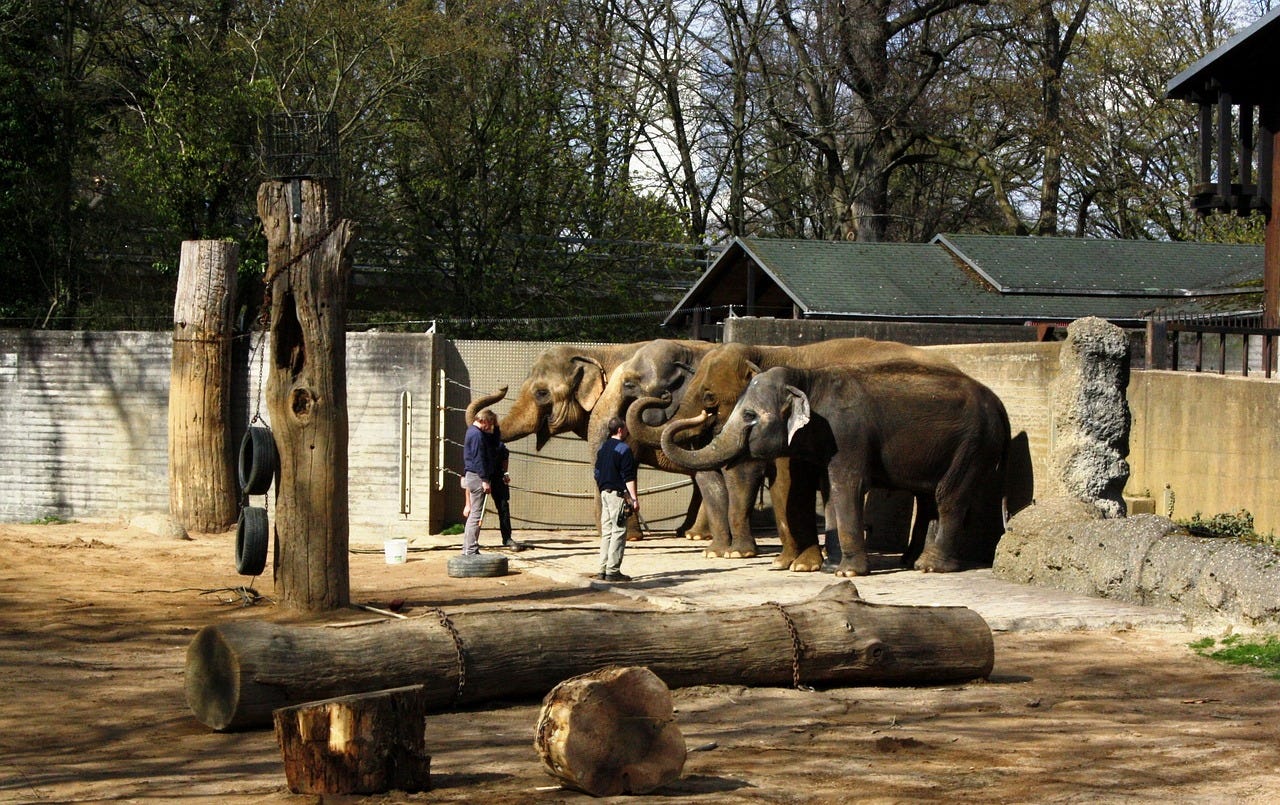From Pharaohs' Menageries to Modern Morality and Ethics: The Evolving Landscape of Zoos and Aquariums
Animal Rights
Zoos and aquariums have long been popular destinations for people of all ages, offering a glimpse into the world of majestic animals and fascinating marine life. The sight of lions pacing their enclosures or dolphins gliding through artificial oceans sparks a sense of wonder and curiosity in most visitors. But…
Zoos and aquariums, once symbols of power and conquest, now navigate a complex narrative of awe, ethics, and conservation. From colonial displays to today's focus on education and endangered species, our evolving relationship with these institutions sparks debates on cruelty versus research. The ongoing dialogue shapes the future of our connection with the natural world.
However, the history of zoos and aquariums is not solely one of awe and wonder. It is a complex tale that reflects the evolution of our relationship with the natural world. In the past, these institutions were often seen as displays of power, showcasing exotic creatures from distant lands as symbols of colonial conquest and imperial dominance.
As the world changed, so did our attitudes towards animals and the environment. Concerns about ethics and animal welfare have become increasingly important, leading to a re-evaluation of the role of zoos and aquariums in society. Today, many facilities focus on conservation and education, working to protect endangered species and promote a deeper understanding of the natural world.
Despite these changes, controversies and debates continue to surround the practice of keeping animals in captivity. Some argue that zoos and aquariums are cruel and outdated, while others see them as valuable tools for research and education. Whatever your opinion, there is no denying the impact that these institutions have had on our understanding of the natural world, and their continued evolution will be shaped by the ongoing dialogue between humans and animals.
From Royal Extravaganza to Scientific Inquiry
The earliest whispers of zoos echo back to ancient Egypt (circa 3500 BC), where pharaohs amassed exotic animals as symbols of their dominion. These weren't havens for wildlife; they were menageries, starkly showcasing royal power and wealth. The Romans, too, embraced this tradition, building private collections for entertainment and study. Gladiatorial arenas showcased exotic beasts in brutal spectacles, blurring the lines between observation and cruelty.
Shifting Sands: From Showcases to Conservation Efforts
The 19th century ushered in a turning point. Scientific curiosity blossomed, and zoos began to transform into institutions dedicated to understanding and learning about the animal kingdom. London's Zoological Society established the first scientific zoo in 1828, marking a shift from mere spectacle to education and research. This evolution continued, with Carl Hagenbeck's innovative open-air enclosures in the early 20th century laying the groundwork for more naturalistic habitats.
Modern Dilemmas: Balancing Entertainment with Ethics
Today, zoos and aquariums face a crucial question: are they morally and ethically justified? Proponents argue that they play a vital role in wildlife conservation, breeding endangered species, and raising awareness about environmental threats. Modern zoos prioritize animal welfare, offering enriched environments and engaging in research to improve captive animal care.
However, critics remain unconvinced. They argue that confinement, no matter how carefully designed, is inherently detrimental to animal well-being. The psychological stress of captivity, the inability to express natural behaviors, and the limitations of even the most spacious enclosures raise concerns about the ethical implications of keeping animals in captivity.
Beyond Bars: A Call for Alternatives
The call for a ban on zoos gathers momentum, with activists advocating for ethical alternatives. Sanctuaries and wildlife reserves offer safe havens for rescued animals, prioritizing their well-being over public entertainment. Technological advancements like virtual reality present exciting possibilities for education and conservation without the need for physical confinement.
Conclusion: A Legacy of Transformation, a Future of Choice
The history of zoos and aquariums is a reflection of humanity's changing relationship with the animal kingdom. These institutions have evolved from being symbols of power to centers of scientific inquiry. However, the ethical concerns surrounding the captivity of wild animals still exist. We need to face and address these challenges as we move forward. We need to explore alternative solutions so that our fascination with the natural world does not come at the expense of the creatures we seek to understand and appreciate.
Sources:
The Context of Zoos and Aquariums - The Pontifical Academy of Sciences
Zoo and Aquarium History: Ancient Animal Collections To Zoological Gardens - Herman Reichenbach
History of Zoos in Parks - NYC Parks
The History of Zoos and Aquariums: From Royal Gifts to Biodiversity - Zoological Journal of the Linnean Society
Zoo - National Geographic Society
Resources
General Resources
Books:
Dominion: The Power of Animals in Nature and in Our Imagination by Matthew Scully
Animal Liberation by Peter Singer
Eating Animals by Jonathan Safran Foer
A Billion Hungry Mouths: Feeding the World Without Consuming the Planet by Colin Tudge
Websites and organizations:
Documentaries:
Academic articles:
"The Case for Animal Rights" by Tom Regan
‘‘Why We Love Dogs, Eat Pigs, and Wear Cows: An Introduction to Carnism’’ by Melanie Joy
‘‘Animal Rights: The Abolitionist Approach’’ by Gary L. Francione
‘‘Fellow Creatures: Our Obligations to the Other Animals’’ by Christine Korsgaard
Receive a single informative article daily at 12:01 AM by email. For additional updates, explore my homepage with exciting vegan and plant-based news content and delightful and delicious recipes. Stay connected to the vegan world and all it has to offer.
Visit The Vegan Project Global our Facebook page for more vegan outreach and education.
Also, visit our new YouTube channel






